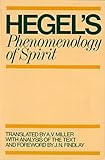Every morning before he writes, Bennet Sims stashes his phone in a safe. It’s not bulletproof, but it’s serious—the Kitchen Safe, a plastic bucket with a time-locking lid originally designed for compulsive eaters, can’t be opened until the predetermined abstention is up. His laptop is no help either, thanks to productivity software that blocks his access to email and other distractions. Sims knows all of this might sound extreme. For him, that’s the point. “Everything about its red-alert, fallout-shelter containment aesthetic suits my own relationship to the internet, distraction, and procrastination,” he recently told the writer Lincoln Michel.
A decade ago, I would’ve seen this behavior as an overreaction, something between a misguided Luddite and Old Man Yells at Cloud. But the last 10 years of the internet have changed my mind. Gone are the halcyon days spent scrolling through esoteric forums and pirating albums from Megaupload. Now, I attempt to hide from targeted ads (fruitless), make a concerted effort to avoid propaganda (impossible), and try to limit my social media intake (depressing). Now, I read about Sims’s routine and think: That sounds wonderful.
Considering his writing routine, it should come as no surprise that Sims’s latest story collection, the excellent Other Minds and Other Stories, is preoccupied with the way technology has interrupted our lives. In “Unknown,” a man is driven to the brink by the repeated calls from a mysterious unlisted number. In “The Postcard,” the narrator blindly follows the directions of his GPS, eventually walking into a waking nightmare. In “Portonaccio Sarcophagus,” a character wanders through his mother’s neighborhood on Google Street View hoping to see her face though all he finds are the app’s faceless creatures.
In someone else’s hands, these might be little more than typeset urban legends, the stuff of 2000s-era AOL email chains, but Sims renders them as something both terrifying and mesmerizing—part existential horror, part philosophical exploration. Even something as innocuous as the Kindle’s Popular Highlights feature is a source of terror in the titular story, leading a narrator to question his own humanity. Although these are clearly short stories, and excellent examples of the form, Other Minds rarely feels fictional. Thanks to our eerie present, where we’re free to spiral down black holes of our own making, it’s not hard to relate with the ever-present anxiety of Sims’s narrators.
The centerpiece of Other Minds is “Introduction to the Reading of Hegel,” a claustrophobic, 30-page paragraph cataloging the thoughts of a graduate student trying to complete his application for a prestigious fellowship. Hung up on the first sentence of his cover letter—Would they object to “seminal” as sexist? Punish him for using the nonstandard phrase “comprised of”?—he decides to research the fellowship’s previous recipient, hoping to gain some insight into what might win the committee’s favor. The internet delivers: Within seconds, he not only learns the Fellow’s name, but also finds her CV, her LinkedIn, her Twitter, her entire digital life. As he doomscrolls, he realizes she’s dedicated her academic  life to Hegel, the one great mind he never got around to reading, leading to a panicked, self-loathing, and stomach-churning quest to force-feed himself The Phenomenology of Spirit before the application’s deadline, all while the image of the Fellow in his mind taunts him. “All his life, if someone had asked him why he read, the reader would have told them that he was curious about other minds,” the narrator remarks, echoing a line that appears earlier in the collection. In “Hegel,” and every other story, Sims illustrates how technology does the opposite, providing us with convenient mechanisms for alienation, ones that encourage us to create enemies rather than build empathy.
life to Hegel, the one great mind he never got around to reading, leading to a panicked, self-loathing, and stomach-churning quest to force-feed himself The Phenomenology of Spirit before the application’s deadline, all while the image of the Fellow in his mind taunts him. “All his life, if someone had asked him why he read, the reader would have told them that he was curious about other minds,” the narrator remarks, echoing a line that appears earlier in the collection. In “Hegel,” and every other story, Sims illustrates how technology does the opposite, providing us with convenient mechanisms for alienation, ones that encourage us to create enemies rather than build empathy.
But Other Minds is not just a collection about technology and its pervasive effects on our consciousness. Sims is just as concerned with storytelling and its tradition, a point made by his subtle homages to great writers, including the images and obfuscation of W.G. Sebald, the metafictional noir of Paul Auster, and the creeping paranoia of Shirley Jackson. The point is not just made in style, though. His characters are readers—of both text and other people—and each story details the ways that technology has corrupted that experience.
Despite that reality, our reality, Sims is a true believer. Other Minds is framed by two responses to art from antiquity, proof that art lives beyond the ephemera of a timeline. “One of the things I find moving and mysterious about the medium,” Sims said of literature in a conversation with Interview last fall, “is that I can pick up a book written by someone who has been dead for centuries, encounter the eccentricity of their consciousness in language, and find the world defamiliarized or estranged through their perceptions of it.”
Technology can feel unavoidable, but it is not all encompassing. For Sims, there is still a way out, a way to visit other times and other minds without interference. “The classical project of literature is to defeat death by fashioning a superior statue. Books are just sculptures that don’t erode,” he writes, staring at a mosaic of Medusa in the Library of the House of Literature in Rome. In Other Minds, Sims reminds us why they’re so durable.

